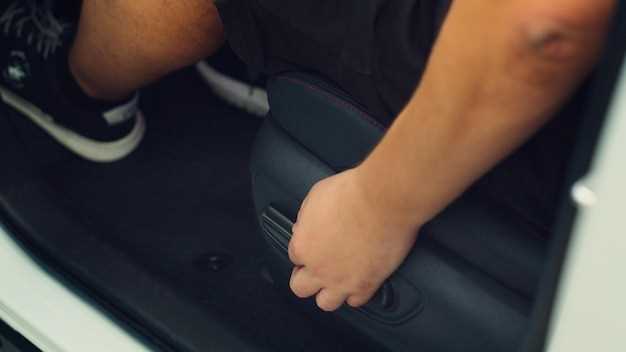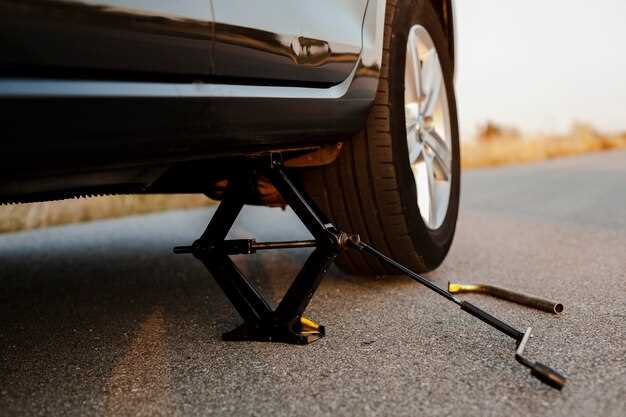
When it comes to maintaining your BMW, the ability to safely elevate your vehicle is crucial for various DIY projects, from changing oil to replacing tires. Using a jack correctly not only ensures your car remains undamaged but also keeps you safe during the whole process. Understanding the key principles of safely lifting your BMW can make all the difference in your automotive endeavors.
Choosing the Right Jack is the first step towards ensuring a safe elevation. Not all jacks are created equal, and using one that is specifically designed for your BMW model will provide the best support. Look for a hydraulic jack that meets the weight specifications and offers a stable lift. This choice is essential for ensuring that your DIY tasks can be performed efficiently and safely.
Once you have the right equipment, developing a proper lifting technique is equally important. Always make sure to engage the parking brake and use wheel chocks to prevent any unexpected movement of the car. Assessing the lift points recommended in the owner’s manual will guide you to safe areas for placing the jack, allowing you to elevate your BMW without risking damage to its structure.
In this article, we will explore step-by-step methods for safely elevating your BMW with a jack, ensuring that your DIY experience remains smooth and secure. Following these guidelines will not only enhance your skills but also improve your confidence in handling your prized vehicle.
Identifying Proper Jack Points for Your BMW Model
When performing DIY maintenance or repairs on your BMW, knowing where to safely place your jack is crucial. Each BMW model has specific jack points designed to support the vehicle’s weight without causing damage.
First, consult your owner’s manual for detailed guidance on jack points specific to your model. Common jack points include reinforced areas on the chassis, typically located near the front and rear wheels. These areas are designed to handle the load when lifting the vehicle.
For the front of most BMWs, look for notched areas just behind the front wheels. At the rear, the points are often found just in front of the rear wheels. Additionally, certain models may feature dedicated jack pads that are easy to identify and use.
Always ensure the vehicle is on level ground, and engage the parking brake before lifting. Using the correct jack points will help prevent damage to the vehicle’s body or suspension components. Following these guidelines will ensure a safe and effective DIY experience with your BMW.
Step-by-Step Guide to Safely Using a Floor Jack

Using a floor jack for your BMW can be straightforward if you follow the proper procedures. Here’s a detailed DIY guide to help you elevate your vehicle safely.
1. Gather Your Tools: Ensure you have a floor jack, jack stands, and a wheel chock. These points are crucial for a safe lifting process.
2. Find a Level Surface: Always work on a flat, stable surface. Uneven ground can cause the jack to slip or the vehicle to tip over.
3. Prepare the BMW: Place the vehicle in ‘Park’ mode (for automatic transmissions) and engage the parking brake. This ensures stability while lifting.
4. Locate Jack Points: Refer to your BMW’s owner’s manual to identify the correct jacking points. Using incorrect points can damage the vehicle’s frame.
5. Position the Floor Jack: Slide the floor jack under the vehicle, aligning it with the designated jack point. Always approach from the side to avoid any unexpected movements.
6. Pump the Jack: Begin pumping the handle of the floor jack slowly. Ensure the jack lifts smoothly and steadily. Watch for any signs of instability.
7. Insert Jack Stands: Once the desired height is achieved, position jack stands under the vehicle at the designated support points. This provides additional security.
8. Lower the Jack: Carefully lower the floor jack until the vehicle rests securely on the jack stands. This step is vital for safety.
9. Double-Check Stability: Before you start working under the BMW, give it a gentle shake to ensure it is steady and secure on the stands.
10. Complete Your Work: After performing your necessary tasks, reverse the process to lower the vehicle. Remove the jack stands and then carefully lift the car with the jack to remove them.
Following these points will ensure that you can elevate your BMW safely and effectively. Always prioritize safety and consult your owner’s manual for specific guidance.
Common Mistakes to Avoid When Lifting Your BMW

When undertaking DIY projects involving your BMW, it’s crucial to lift your vehicle safely. Failing to follow proper procedures can lead to damage or injury. Below are some common mistakes to avoid:
- Neglecting the Owner’s Manual: Always consult the owner’s manual for specific jacking points and recommendations. Each BMW model has designated points for lifting.
- Using an Inappropriate Jack: Ensure that the jack is suitable for the weight of your BMW. Using an under-rated jack can cause it to fail.
- Skipping Safety Equipment: Failing to use jack stands after lifting can result in serious injuries. Always secure the car with jack stands before working underneath.
- Improper Positioning: Lifting at the wrong points can damage the chassis or suspension components. Always lift from approved jacking points only.
- Ignoring the Ground Surface: Make sure your vehicle is on a stable and flat surface. Lifting on an incline increases the risk of the jack slipping.
- Not Checking the Jack: Before lifting, inspect the jack for signs of wear or malfunction. A faulty jack can compromise safety.
- Overlooking Surroundings: Ensure the area around your BMW is clear of obstacles that could interfere while working. This minimizes risk factors significantly.
By being aware of these common mistakes, you can ensure a safe and efficient process when lifting your BMW for maintenance or repairs.



